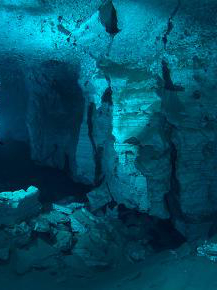Probe shows wetter past
 Researchers have gained new insights into the climatic conditions of the Southern Hemisphere during ice ages, particularly around South Australia’s Naracoorte Caves.
Researchers have gained new insights into the climatic conditions of the Southern Hemisphere during ice ages, particularly around South Australia’s Naracoorte Caves.
Experts including Dr Liz Reed, a renowned Naracoorte Caves and fossil forensics specialist from the University of Adelaide, have made findings that challenge existing theories about ice age climates.
“What we have found is, that at least in the sub-tropical regions of the Southern Hemisphere, parts of the ice ages were even wetter than what we experience today,” Dr Reed says.
Using advanced dating techniques based on the decay of naturally occurring uranium, researchers analysed over 300 speleothem fragments (mineral deposits formed from groundwater) from Naracoorte and Leeuwin-Naturaliste caves.
Their analysis produced a comprehensive precipitation record spanning the last 350,000 years, revealing a pattern of wetter conditions during cooler glacial periods and drier intervals in warmer times.
Interestingly, despite lower atmospheric carbon dioxide levels during these glacial periods, moisture-demanding herbs and shrubs flourished, indicating a climate more hospitable to life than previously assumed.
This insight is supported by comparisons with records from sub-tropical areas in South Africa and South America, underscoring the global significance of the findings.
“This has been a really exciting project because it challenged the things we thought we knew about climate conditions during the glacial periods,” Dr Reed stated, highlighting the importance of reevaluating historical interpretations of plant, animal, and human movements and expansions.
The study helps illuminate the past but also has implications for understanding Australia's future, especially in the context of climate change.
Lead author Kale Sniderman says it is now necessary to rethink ecological refuges and survival strategies of flora and fauna during arid landscapes, suggesting a misinterpretation of historical climates due to this new evidence.
The full study is accessible here.








 Print
Print